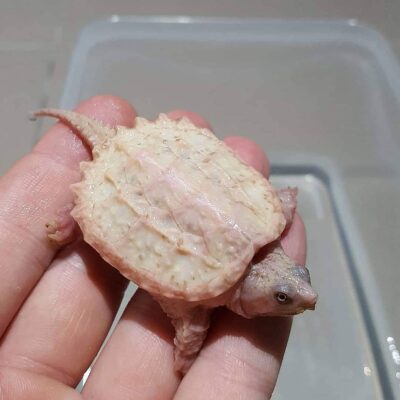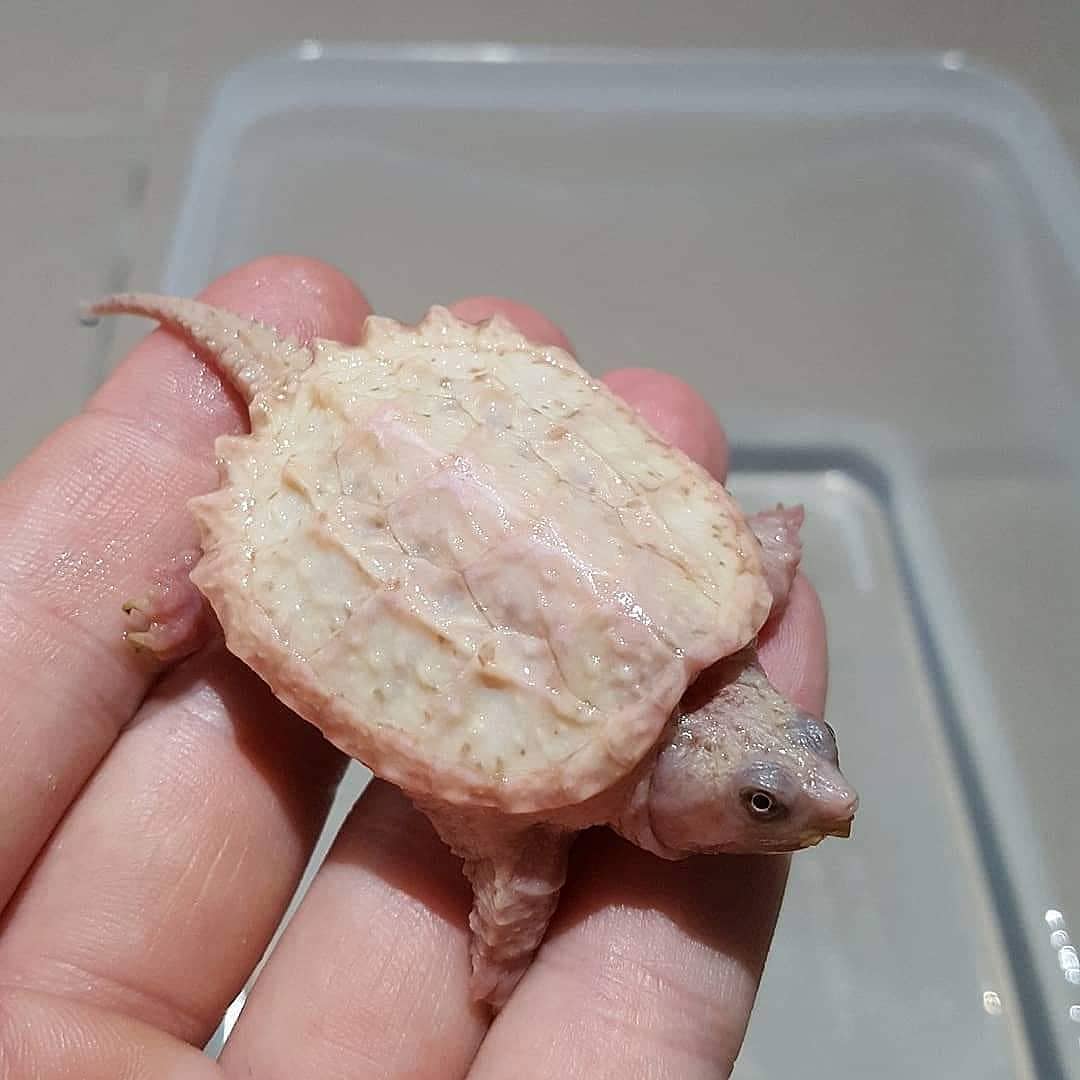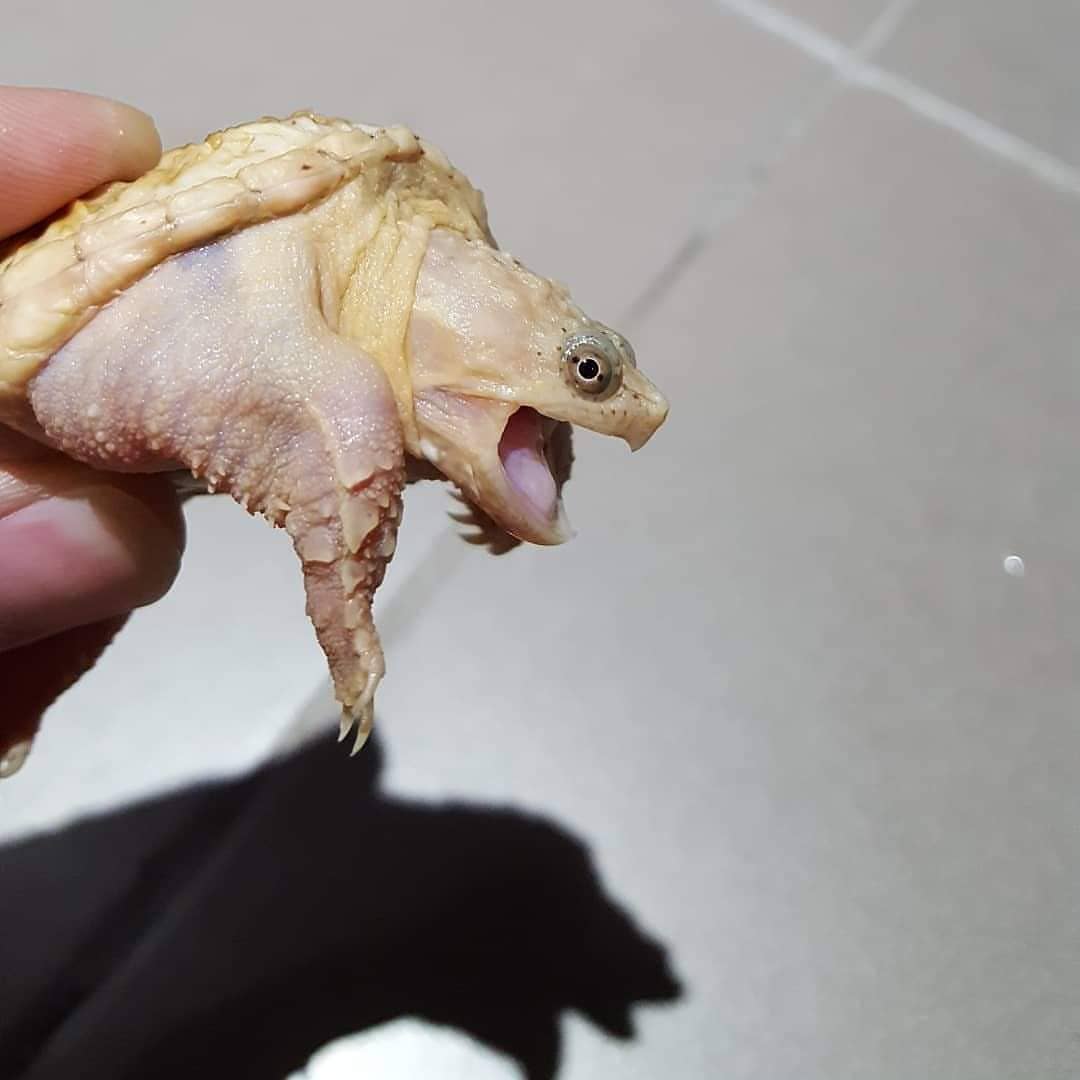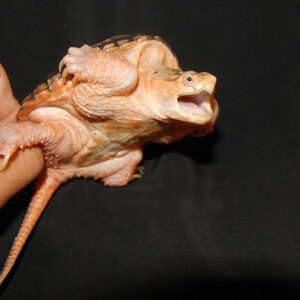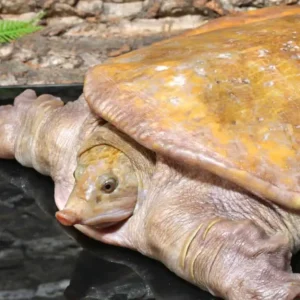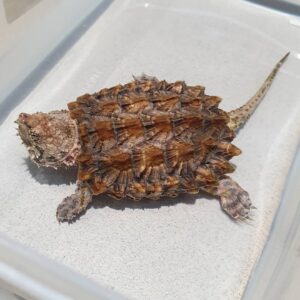Leucistic Snapping Turtle For Sale
$1,200.00
This unusual snapping turtle is pinkish in skin, with the shades of white and blue as well as certain yellow highlights. The eyes are blue, and its shell is light-colored. It’s four inches long and weighs 326g. It is flawless in every aspect and could very well become the sole Leucistic Snapping Turtle known. The way Leucistic Snapping Turtle behaves and the care it receives are similar to normal -colored Snapping Turtles. The reason for this is as follows:
One of the most famous fully aquatic turtles The Common Snapping Turtle, inhabits almost all lakes that are slow moving soft bottomed waters fresh and brackish all the way from Nova Scotia to Mexico, east of the Rocky Mountains. In Florida it is replaced by The Florida snapping Turtle.
Purchase Leucistic Snapping Turtle which are Omnivores and are omnivores and will consume whatever they can squeeze in their mouths.
Juveniles can freely hunt in search of food, while adults like to the ambush predators that lie waiting to catch their next passing food source.
These traits make all sizes great tank turtles. They are not the best turtles for community use Leucistic Snapping Turtle, especially juveniles. They believe that all tails are worms and will immediately take them away – even snappers. We feed our turtles pellets, chopped meat and fish. The water plants are also available. One study has demonstrated the hatchlings to be able to imprint on the first food items. Buy Leucistic Snapping Turtle
In the past century the public’s desire for Leucistic Snapping Turtle, seriously affected numerous wild populations. Today the majority of them are raised on farms as well as in the US as well as abroad. Wild Snapping Turtles are almost always quite vicious.
The snappers raised by captivity, if treated regularly, will be controlled down pretty easily. They will never lose their violent feeding instinct and keepers are never able to lose their fascination with them…
Please be aware it is important to note that California or Washington state don’t allow Snapping Turtles being kept by individuals. Therefore, we are unable to transport Snapping Turtles to these states without a permit.
Description
Leucistic snapping turtles are a captivating anomaly in the reptile world. Unlike their common counterparts, these turtles exhibit a unique genetic condition known as leucism, which results in a partial loss of pigmentation. This gives them a distinctive and striking appearance, making them a subject of great interest among herpetologists and reptile enthusiasts alike.
Understanding Leucism
Leucism is often mistaken for albinism; however, it is distinctly different. While albinism is characterized by a complete absence of melanin, leading to an all-white appearance with red eyes, leucism results in a partial loss of pigmentation. Consequently, leucistic snapping turtles may have patches of normal coloration along with areas of white or pale skin and scales. Their eyes usually retain their normal coloration, providing a key differentiator from albino turtles.
Habitat and Behavior
Leucistic snapping turtles, like their non-leucistic relatives, are typically found in freshwater environments such as ponds, lakes, and slow-moving rivers. They are known for their aggressive nature and powerful jaws, which they use to catch a variety of prey, including fish, amphibians, and invertebrates. Despite their fierce reputation, snapping turtles play a crucial role in their ecosystems by helping to control the population of their prey and contributing to the overall health of their habitats.
Conservation and Care
The rarity of leucistic snapping turtles makes them especially vulnerable to threats such as habitat destruction and illegal trade. Conservation efforts are essential to protect these unique reptiles and their habitats. For those interested in keeping leucistic snapping turtles as pets, it is important to ensure they are sourced from reputable breeders and provided with proper care, including a suitable aquatic environment, a balanced diet, and regular veterinary check-ups.
Conclusion
The leucistic snapping turtle is a remarkable example of nature’s diversity and the fascinating genetic variations that can occur within a species. By understanding and appreciating these unique creatures, we can contribute to their conservation and ensure they continue to thrive in the wild and in captivity.
